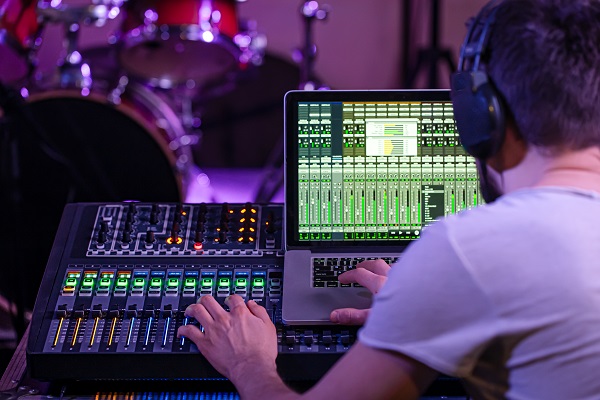What Is the Difference Between Mixing and Mastering?

Do you have an interest in producing great quality music? Whether you are a beginner or an experienced producer, it is important to understand the difference between mixing and mastering.
In this article, we will explore the differences between mixing and mastering music, the basic idea behind a song, the tasks and techniques used in both, and common misconceptions about stereo bus processing.
Let's dive in and learn more about mixing and mastering so you can produce amazing music.
Definitions and Overview
Mixing and mastering are two distinct processes in the production of a song.
Mixing is the stage after recording where individual tracks are blended together. It involves balancing levels, cutting or boosting frequencies, and compressing dynamics.
Mastering, on the other hand, is the final stage of audio production where the entire mix is polished for distribution. It involves using EQ, compression, and limiting to enhance the overall sound, create consistency across the album, and prepare it for distribution.
Mixing is like the editor of a book, while mastering is like the copyeditor.
Both processes are essential for creating a professional, polished final product.
Tasks and Techniques in Mixing
Frequently, Mixing Engineers use tools like EQ, compression, panning, and reverb to balance all the tracks and make them sound as if they're one cohesive song. This involves reducing clashes between instruments, tightening grooves, and emphasizing important elements.
Audio panning is used to achieve desired effects, while EQ and compression are used to cut or boost frequencies to achieve the perfect balance. Mix engineers may layer drum hits with samples or mute redundant instrument parts to create a unique sound.
Furthermore, they may add time-based effects to the mix. Ultimately, the goal of mixing is to create a cohesive and balanced sound for the entire song.
Balancing levels and audio panning are essential parts of the mixing process.
Tasks and Techniques in Mastering
Usually, mastering engineers take a holistic approach to the final mix, using EQ, compression, and limiting to enhance the overall sound. They ensure the song competes with similar material by established artists in the genre and create metadata such as ISRC numbers, UPN codes, and song titles.
Mastering engineers also rely on the mastering room and speakers to ensure the mix sounds good on all playback systems. They carefully position start and stop points to ensure the album has the right flow, and create dedicated files for specific formats and delivery systems.
Mastering is the last line of defense before a song is released, and is essential for a more polished and professional final product.
Importance of Separate Engineers
Whereas having separate mixing and mastering engineers allows for a fresh set of ears to evaluate and enhance the mix, it's even more important for these roles to be kept separate. Collaboration between the two engineers can lead to a more polished and professional final product.
Additionally, separating the roles ensures a more objective and unbiased evaluation of the mix. Both engineers can specialize in their respective field, leading to better results. Advantages of specialization include improved accuracy and faster completion times.
Furthermore, the collaboration between the engineers can yield significant creative benefits. Consequently, having separate mixing and mastering engineers is essential for producing the highest quality audio.
Tools and Examples
You'll need certain tools and techniques to mix and master your music. These include EQ, compression, panning, reverb, and limiting.
Mix engineers use EQ to carve and balance tracks to sound good when played together. It helps in bringing out the best in each instrument and creating a cohesive sound.
Compression is another important tool used in mixing and mastering. It is used to reduce clashes between instruments and tighten grooves. It helps in evening out the dynamics and making the track sound more polished.
Panning and reverb are used to create space and depth in the mix. Panning allows you to position different instruments in the stereo field, creating a sense of width. Reverb adds ambience and creates a sense of space, making the mix sound more three-dimensional.
Limiters are used in the mastering stage to bring the loudness levels of the track to market standards. They help in achieving a consistent volume level across different playback systems.
In addition to these tools, there are specialized features and modes that are tailored for mastering. Linear phase filtering is one such feature that helps in maintaining the phase relationships between different frequencies. Optical mode is another feature that adds subtle harmonic coloration to the track, enhancing its overall sound.
Having the right tools and techniques is essential for mixing and mastering. With their help, you can create a professional sounding track that is balanced, polished, and ready for the world to hear.
You can read more about the differences between mixing and mastering in this article.
Conclusion
Mixing and mastering are two very important processes in music production. Each process has its own techniques and tools, and it's important to have two separate engineers for each process.
Mixing and mastering are both essential for creating a great quality song, and understanding the differences between the two will help you get the most out of your production.
With the right knowledge and tools, you can master the art of mixing and mastering and produce amazing music.